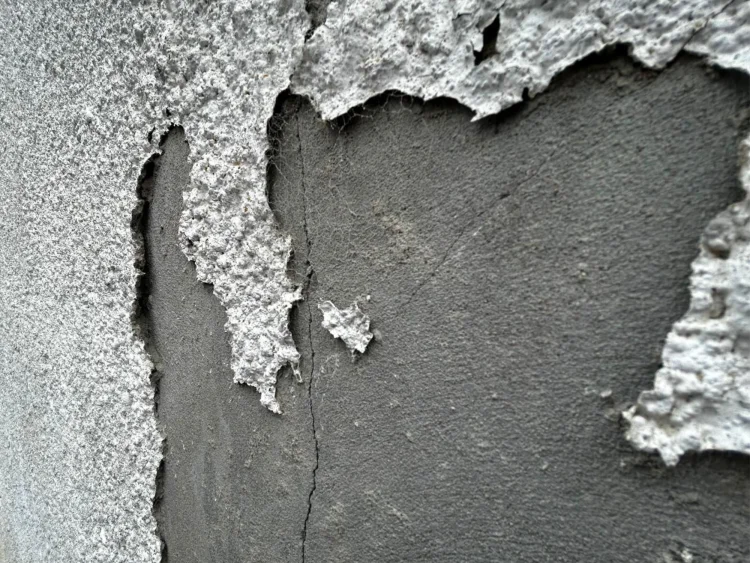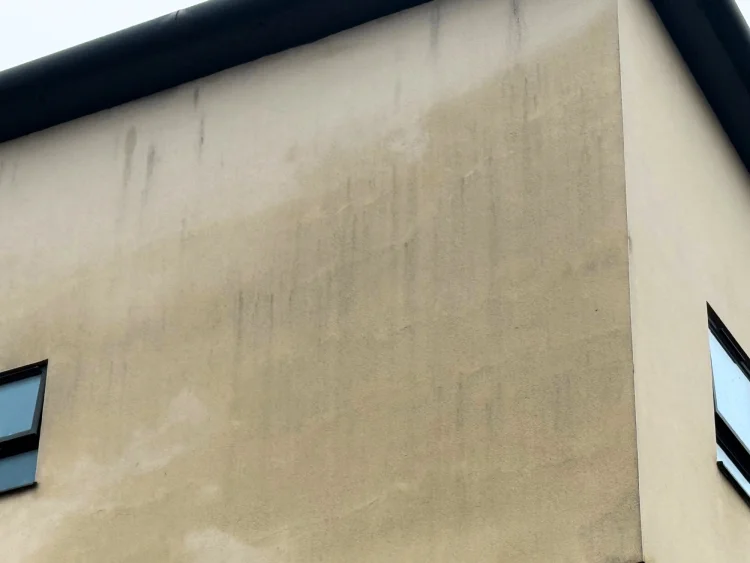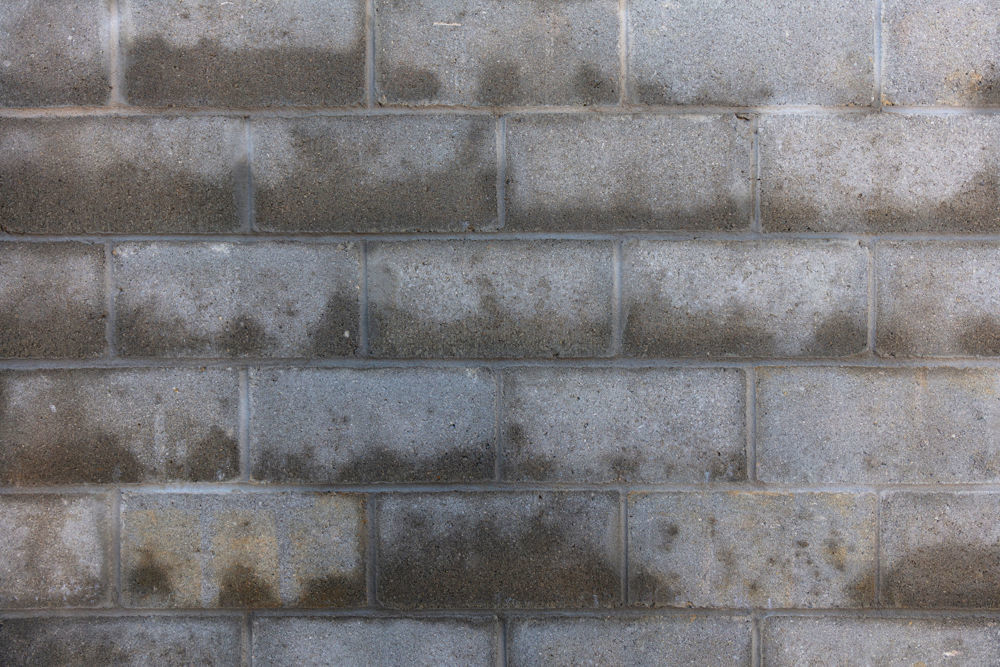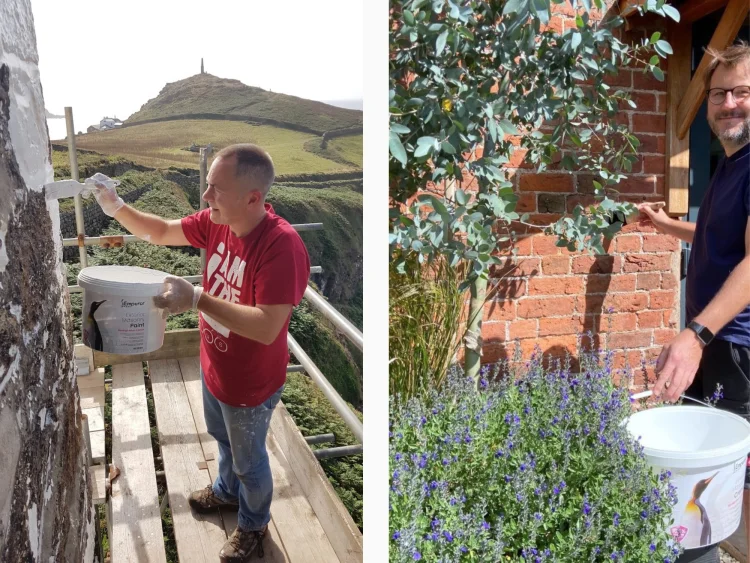How To Get Rid of Damp Walls Permanently

Solving damp problems is one of the main jobs on the to-do list for many when it comes to the cooler months. If left untreated, it can damage your interior and exterior walls, leads to mould and can cause structural problems.
Questions about damp are among the ones we receive most often, which is why our Technical Team have put together this guide with everything you need to know to identify damp and prevent it coming back.
This guide covers:
- What causes damp
- The main types of damp
- How to identify each type
- How to treat and prevent them effectively
What Causes Damp Walls?
Damp walls develop when there is an accumulation of moisture within a property. This happens when water from outside penetrates into the building, or when humidity inside the home condenses.
There are three main types of damp; rising damp, penetrating damp and condensation.
RISING DAMP
Rising damp is caused by moisture from the ground that travels up through the walls of a property.
This happens when a damp proof course (DPC) is missing, damaged or no longer effective.
The DPC acts as a water resistant barrier near the base of the wall to prevent the moisture transferring from the ground through the bricks.
Rising damp affects ground-floor walls and can be identified by visible tide marks and damp patches that spread upward.
It is frequently misdiagnosed and is in reality less common than other forms of damp.
PENETRATING DAMP
Penetrating damp occurs when water enters a property through the external walls.
It can affect any level of a building and is often caused by defects such as cracks or damaged pointing that allows rainwater to be easily absorbed by the porous brickwork.
Penetrating damp doesn’t need a defect to impact your home however. Many homeowners believe that brickwork is naturally waterproof, but in reality brickwork is porous, meaning it will absorb moisture. This is known as water ingress.
Once absorbed, the moisture travels through the wall and can reach internal surfaces, leading to damp patches, peeling paint, mould growth and damage to the external wall.
Penetrating damp can be identified by dark, damp patches on both external and internal walls or visible damage such as cracked render.
Learn more: A guide to penetrating damp
CONDENSATION
Condensation is one of the most common causes of damp on internal walls because it can occur in any home.
It is the result of warm, humid air from day-to-day activities like showering, cooking or drying clothes meets cold surfaces, causing water droplets to form.
It is most common in the autumn and winter months when homes are heated and windows remain closed.
It typically appears in areas with poor ventilation or in high humidity rooms, such as bathrooms, kitchens and around window frames.
The Problems Caused By Damp Walls
Damp walls affect far more than appearances. Excess moisture damages your home, reduces its energy efficiency and can harm your health.
HEALTH IMPACT
The main symptom of moisture rich conditions is black mould spots across the internal walls of a property.
This can cause skin conditions and respiratory problems, especially with people who are more sensitive to these problems.
The NHS, states that ‘Damp and mould within the home can produce allergens, irritants, mould spores and other toxins that are harmful to health.’
STRUCTURAL DAMAGE
One of the most serious consequences of damp is structural damage.
Penetrating damp in particular can lead to significant damage to exterior walls. When moisture within the wall undergoes a freeze-thaw cycle, it will expand, causing movement within the masonry.
This process opens cracks, breaks brick faces and crumbles mortar joints. As more water enters, the damage worsens, creating a continuous cycle of damage that can be very costly to repair.
High moisture levels also damages internal walls. Paint, plaster and wallpaper can all bubble and flake. While this is not structural, it is highly visible and often requires repeated redecorating.
HEAT LOSS
One of the key indicators of damp is a cold property. Wet walls transfer heat much quicker than dry walls, meaning valuable energy is used to dry out the wall instead of heating the home.
This is shown by leading independent bodies, including the Energy Saving Trust which reports that approximately 33% of total heat loss in uninsulated homes occurs through walls. When those walls are damp, the rate of heat loss increases further because the moisture increases the wall’s thermal conductivity.
This results in higher energy bills, as you use more heating to maintain a comfortable temperature.
If you want to see how healthy your walls are, use our handy wall health check to spot issues early and keep your home stress free.
How To Prevent Damp Walls
The first step when finding a solution to your damp problems is to identify what the source of the damp is.
Damp problems will only worsen over time if the source of the moisture is not found. You must address the core source of the damp if you are to permanently get rid of damp on your walls.
How To Prevent Rising Damp
In order to address rising damp, you must either repair or install a damp proof course (DPC).
If the DPC is missing, a new one can be installed either using a physical membrane or a chemical injection.
Due to the nature of this work, it is recommended that you contact a damp proofing expert in order to address rising damp.
How To Prevent Condensation
Condensation is best treated by improving ventilation and reducing cold surfaces where moisture collects.
Start by improving the ventilation through your home. Open windows regularly, use extractor fans and keep furniture away from cold walls.
Many people avoid opening windows in winter thinking it lets damp air in. The truth is cold air holds less moisture than warm air, so introducing cold, dry air from outside and letting moist air escape can reduce condensation.
In problem areas such as bathrooms and kitchens or rooms, there are paints to prevent condensation forming. While some anti-condensation paints kill black mould when it grows on the wall, more advanced options prevent the formation of condensation in the first place.
How To Prevent Penetrating Damp
In order to treat penetrating damp, in short you must prevent water from coming through the wall.
Start by inspecting the outside of your home for common signs of water ingress like:
- Blocked or leaking gutters
- Damaged window seals
- Cracks in render or brickwork
- Crumbling or missing mortar
Make any repairs that you may need. In the case of cracks, you can fill these using a good-quality exterior filler.
Once any defects are repaired, the external wall must be treated to prevent any moisture absorbing into the building.
If the wall is sound or repairs have been made, there are ways to prevent water absorbing into exterior walls and protect your home from penetrating damp.
There is a large amount of confusion and misinformation regarding products that waterproof exterior walls. This comes from many products, known as ‘sealers’ being developed. These create a waterproof seal on exterior walls that locks rain from entering the wall but also prevents moisture inside the building escaping.
If moisture is not allowed to freely escape a property, it will gradually build-up and make damp problems even worse, which is the complete opposite of what these products are meant to do.
The build-up of moisture will eventually cause structural problems as the brick or stone underneath the sealer is attacked by the moisture, causing it to crumble and crack. Eventually, the sealer will fail in a matter of years, or even months, eventually allowing the ingress of water once again.
Modern developments in recent has led to a new type of product that uses nano-technology to line the pores of a material in order to address this.
This creates a water repellent surface that repels rainwater, but stays fully breathable.
Emperor Masonry Paint and Emperor Masonry Creme are examples of this technology. Independent testing by UKAS accredited laboratory Lucideon found that both reduced water absorption by 96% with no negative impact on the breathability of the wall. They also found that they showed no signs of deterioration after a 25 year period.
The same tests showed that by keeping exterior walls dry, they kept walls 6°C warmer on average when compared to an untreated walls due to the significantly lower moisture levels in the treated walls that helped reduce heat loss.
Learn more: View the independent laboratory findings
Frequently Asked Questions
Does damp impact both cavity walls and solid walls?
Whether your home has a cavity wall or a solid wall, moisture soaking into an external wall can cause a problem under the right conditions.
Solid walls offer no gap between external and internal wall, so any moisture that penetrates the outer face can move directly through. This means that many older homes are particularly at risk.
Cavity walls can also be affected. Poorly fitted cavity wall insulation or debris in the cavity will also create a bridge for moisture to enter a property.
How much does it cost to fix damp walls?
The cost of fixing damp depends on the cause, extent and treatment required.
Minor issues such as repairing cracks or improving ventilation often cost very little.
Treating rising damp or large scale penetrating damp if repointing or other repairs are needed can cost in the thousands.
Treatments like Emperor Masonry Paint or Emperor Masonry Creme offer a cost-effective option for reducing water absorption and the impact of penetrating damp. To treat a wall of around 25-30m² costs £125.
Can I paint on top of damp walls?
You must have dry conditions in order to apply these exterior coatings. Allow the masonry to dry out before applying the penetrating damp treatments, ensuring you leave yourself enough time to fully apply it to the wall and for it to dry before it rains.
You must also not apply them in conditions below 5°C, as with any water-based exterior product.
Want more help and advice? Our in-house team of experts are always here to help you find the best solution for your home. You can reach them by emailing [email protected] or calling 01254 936121.
Ready to start? Take our handy quiz to get personalised recommendations and find the right products to prevent your damp walls in a few clicks.
This article was written by the Emperor Technical Team, a group of experts with an average of over 25 years experience in the building industry. They work daily with homeowners, tradespeople and specification professionals to deliver practical, expert guidance that promotes long-term results, supports wall health and helps create homes that are prepared for the future.








